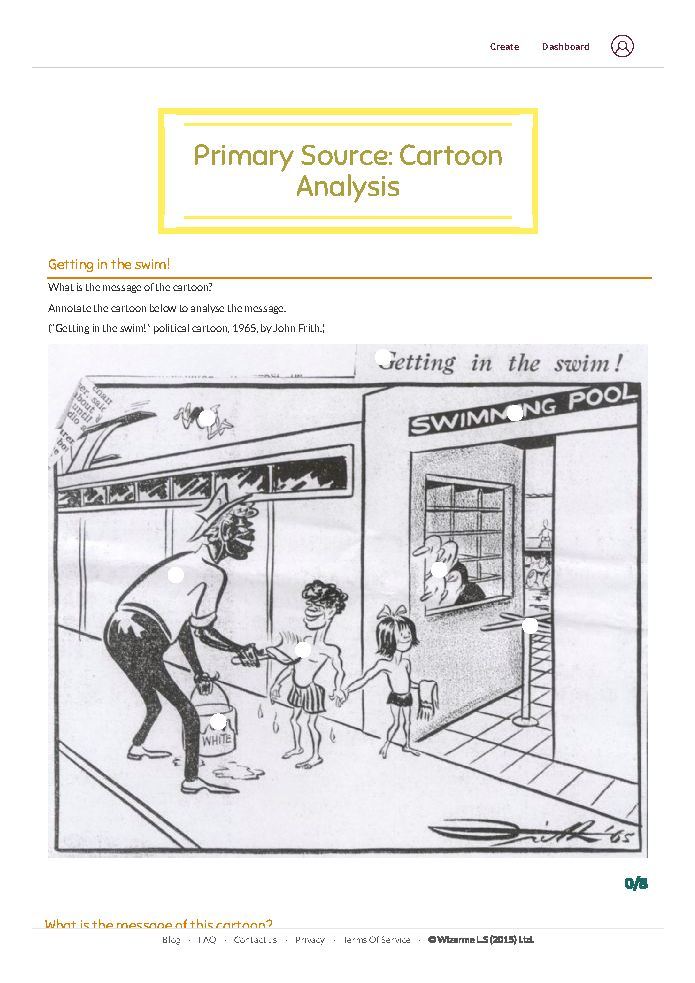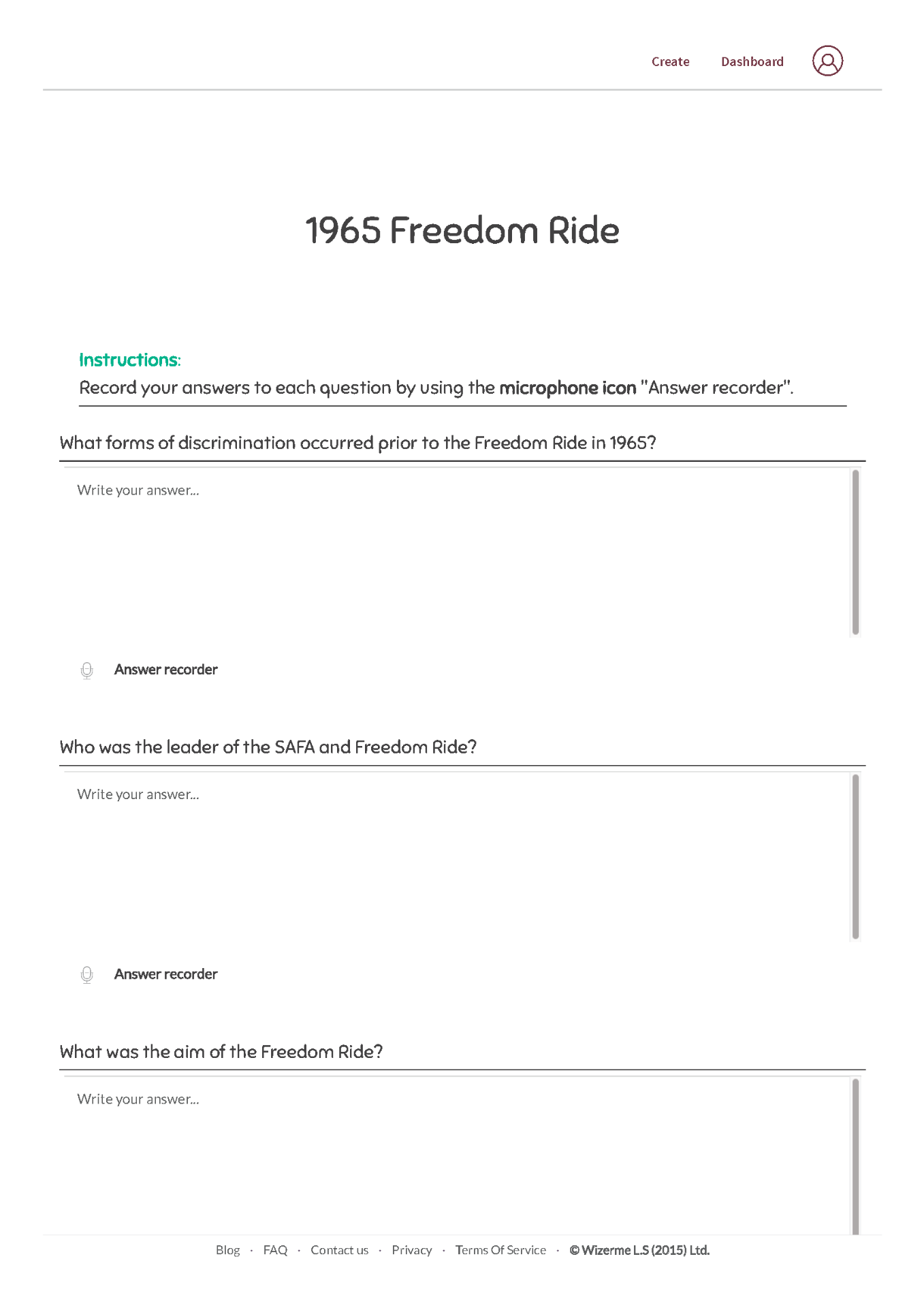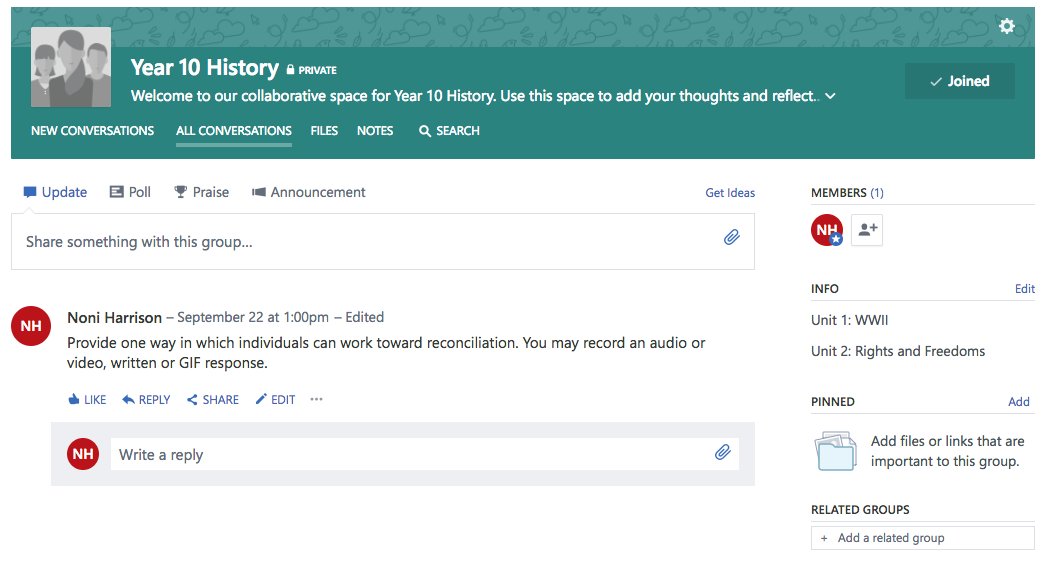Category: INF533
Digital Storytelling: The Long Road to Freedom
Digital Story: The Long Road to Freedom
Make sure to turn on your sound.

The long road to freedom by Noni Harrison is licensed under a Creative Commons Attribution-NonCommercial-NoDerivatives 4.0 International License.
NB: Students who will use this digital story have access to Microsoft Office 365; therefore, have free and easy access to Wizer and Yammer. CSU staff and students can access these platforms by using their CSU account for Microsoft Office 365. If you are unable to access these elements during your experience, please refer to the preview images below:



[Assignment 4: Digital Storytelling Project and Reflection Part B]
Protected: Assignment 4: Digital Storytelling Project and Reflection Part C
Digital Tools
Digital texts and storytelling should be incorporated more broadly into our school program to enhance student engagement with reading and writing through these digital environments. Tackvic stated, quite poignantly, that digital tools can add a “positive dimension to traditional literacy” by helping users to become confident writers whilst using 21st century skills (2012). It seems that digital tools can help break down barriers to writing by spurring on creativity, providing stimulus and using skills relevant to contemporary learners. Sukovic also proposed that digital storytelling can engage learners and “tap into multiple intelligences and literacies”, which is very relevant in terms of good pedagogic practice and meeting the demands of the Australian Curriculum (2014). Additionally, digital learning environments provide spaces where students are exposed to a range of ideas and can work independently and collaboratively. These are all things we need to consider when addressing the diverse learning needs of our students.
After completing the last forum reflection, which addressed the use of social media, I have done some more thinking and researching on productive use of social media in the classroom. Fitzgerald spoke of the ability for social media to engage with and respond to the real world with real-time storytelling (2013). This was a pivotal statement for me. As someone who really engages with immersive journalism, I think this form of real-time storytelling could be a powerful tool in students sharing both non-fiction and fiction stories across a range of subject areas.
For example:
Non-fiction use:
- For English, students could write short story or recount in GIF form using an online generator
- For History, students could create a real-time class time line of a historical event (e.g. WWI or WWII), whereby each student would be assigned 1 day to record or add to the class Yammer. This would be in a similar vein as “WW2 Tweets from 1939“.
- For English, Year 9 students could take inspiration from the Humans of New York Facebook account and create a similar class project based on the biographies they are writing for their assessment task.
Fiction use:
- For English or Drama, students could collaboratively write a creative story, 1 line at a time on the class Yammar.
- For English or Art, students could create an Instagram narrative e.g. Ban.do‘s latest marketing campaign is based on a road trip narrative.
- For Drama, students could create a social media account for a fictional character. E.g. Darth Vader’s Twitter account.
Also, I’d really like to look more into the iTell project, as the report and results were very interesting and inspiring.
References:
Fitzgerald, A. (2013, July). Adventures in Twitter fiction [Video file]. Retrieved from https://www.ted.com/talks/andrew_fitzgerald_adventures_in_twitter_fiction
Sukovic, S. (2014). iTell: Transliteracy and digital storytelling. Australian Academic & Research Libraries, 45(3), 205–229. http://doi.org/10.1080/00048623.2014.951114
Tackvic, C. (2012). Digital storytelling: Using technology to spark creativity. The Educational Forum, 76(4), 426. Retrieved from http://dx.doi.org.ezproxy.csu.edu.au/10.1080/00131725.2012.707562
[Forum Reflection 4.2]
Exploring Digital Forms: Incorporating tools into practice
Protected: INF533 Assessment Item 2: Experiencing Digital Literature Part A
Protected: INF533 Assessment Item 2: Experiencing Digital Literature Part B
Challenges of Using Digital Literature in the Classroom
I honed in on the iPed model when contemplating this question. Following a model, such as this, to structure each experience will ensure the learning experience is intentional and valuable, which can enhance student learning and confidence (Mills and Levido, 2011). I thought this approach had some similarities with what was suggested by Walker, Jameson and Ryan; to connect the academic learning with the students’ own experiences (2010). Despite the readings centering on different aspects of digital literacy and learning, they both suggest that connecting with the students’ world will enhance engagement and motivation. This is not a new concept but it is important to remember when preparing to alter our teaching pedagogy to more successfully embed digital practices and tools.
References:
Mills, K.A., & Levido, A. (2011). iPed: pedagogy for digital text production. The Reading Teacher, 65(1), 80-91, DOI: 10.1598/RT.65.1.11
Walker, S., Jameson, J., & Ryan, M. (2010). Skills and strategies for e-learning in a participatory culture (Ch. 15). In R. Sharpe, H. Beetham, & S. Freitas (Eds.), Rethinking learning for a digital age: How learners are shaping their own experiences (pp. 212-224). New York, NY: Routledge
[Forum Reflection: Module 2.3]
Trends in Digital Literature
Use of digital literature in the classroom can definitely be challenging in terms of access to technology and digital information for staff and students who are up against firewalls, restrictions and resourcing constraints. With time and increased investment in the power of digital tools, hopefully many schools will see a shift in this area and be better equipped to open up those lines of information.
I really loved hearing the insights from a range of professionals and experts in the field of digital technology and learning in the “Learning 2030: From books and screen” panel discussion. The enablers, barriers and possibilities explored during this discussion were interesting to hear. One reoccurring point was the need for teachers to be upskilled – for some sort of professional development to occur when implementing new ways of working with technology in the classroom (The Agenda with Steve Paikin, 2013). I see this need daily. Some teachers are very fearful of using technology because they feel they will lose control of the classroom; whether that be in terms of behaviour management and control of what the students are accessing or control of the teaching because it becomes more student driven. Some teachers are just unfamiliar with the devices or adverse to change due to the constant changing nature of the profession. There must be substantial investment, sector-wide, in developing teachers’ skills and confidence in using digital mediums as effective teaching tools.
I discovered a great article (New directions for early literacy in a digital age: The iPad) that covers many of the opportunities and challenges of using digital tools in the classroom. Ultimately, to get the most of digital tools (including digital literature) we need to integrate it into the curriculum not simply use it as a substitute for our current ways of teaching and learning. The study found that the use of iPads in the classroom didn’t just have impacts on engagement and learning but had flow-on effects for students on a social level, where peers changed how they perceived each other according to their digital interactions and digital behaviours (Flewitt, Messer, and Kucirkova, 2015).
Another great read, which I’m still trying to get my hands on (can’t seem to access the full article), is Hypertext, Hypermedia by Raine Koskimaa. It sounds like it would be an excellent resource that looks at highly interactive digital literature and its different forms. Koskimaa’s early work The challenge of cybertext: teaching literature in the digital world, even though now 10 years old, highlights some important and still relevant points about teaching literacy through these new and emerging modes. Koskimaa suggests that we should acknowledge the challenges that digital literature may bring to teaching but ultimately, we need to embrace these changes and look at the potential for growth that is on offer.
References
Flewitt, R., Messer, D., & Kucirkova, N. (2015). New directions for early literacy in a digital age: The iPad. Journal of Early Childhood Literacy, 15(3), 289-310. doi: 10.1177/1468798414533560
Koskimaa, R. (2007). The challenge of cybertext: teaching literature in the digital world. Arts and Humanities in Higher Education, 6(2), 169-185. doi: 10.1177/1474022207076826
The Agenda with Steve Paikin. (2013, October 4). Learning 2030: From Books to Screen [Video file]. Retrieved from https://www.youtube.com/watch?v=215NPpHsQPk&feature=youtu.be
[Forum Reflection: Module 1.3]
Evaluating Digitally Reproduced Stories
Some of the literature identifies the enhancements digital literature can offer and others highlight the potential barriers readers might encounter. Walsh (2013) and Lamb (2011) seem to support each other when discussing the future of digital texts. Lamb (2011) speaks of transmedia, while Walsh (2013) speaks of hybrid texts but both are discussing the same concept, that of engaging students with content outside of the text. I find this particularly interesting, as the addition of author’s websites, blog posts, maps, videos, and other participatory elements has such potential in enhancing the overall reading experience. At a time where reading seems less appealing to students (the ever constant battle between technology and the ol’ paper back), exploring a text in different formats and media can help to engage readers and contribute to expanding the whole reading experience.
The important point to note is to ensure this type of reading is integrated and not incidental. If integrated across the curriculum, the potential for creating diverse and inclusive learning experiences is vast. When selecting text for students, teachers and teacher librarians must be careful in selecting authentic and high quality text. Lamb (2011) and Jabr (2013) both identify that if the text offers too much freedom of navigation (or digital literacy skills are not adequately addressed), then readers might become lost in the text, which can inhibit reading comprehension. Definitely something to be mindful of. Technology has increased the accessibility of multidimensional text but has also allowed easier publication of narratives that might be of varying quality.
[Forum Reflection: Module 1.2]